


















It is with great excitement that we welcome you to be a part of the 2023 District 6 growing season! Over the past 4 seasons, our passion for growing plants continues to, well…grow, and we have spent countless hours, carefully choosing the BEST plants – expanding customer favorites and also adding many new varieties - for you to have the most rewarding garden possible. As always, we strive to bring you the highest quality plants and the best customer service!
This Lookbook is an information-packed collection of the 100+ fruit, vegetable, & herb plant varieties we grew for this season. On the following pages, for each plant, you will nd helpful and interesting information about the plant, as well as a visual reference. We are providing all this information to help you plan your garden, and also to help you learn more about each plant.
For the most up-to-date news on what’s going on at District 6, be sure to follow us on Facebook or Instagram. In the meantime, please use this Lookbook to plan your landscaping project, make your list, and hit the ground running when you arrive at District 6!
Cheers to a highly-successful 2023 gardening
Austin & Kristen Witt District 6 Market, LLCDistrict 6 Market is a family-owned greenhouse & outdoor living business located a short drive east of Terre Haute, IN, where top-quality plants and top-notch customer service take the highest priority.
We take great pride in growing our plants in our own greenhouses. In doing so, we are able to offer amazing, high-quality plants you will not find anywhere else. Growing them from seed, root, or cutting, you can be sure that we have the expertise you are looking for when you have questions.
Trust that we will have accurate, honest answers for your questions!
100% NATURE
Welcome to the District 6 Schedule page for Spring, Summer, and Fall! Our schedule page is designed to keep you updated on our operating hours throughout the seasons.
April 3 - July 31
Monday – Saturday 9am-5pm Sunday 11am-5pm
Closed July 4 Independence Day
Summer Season:
August 1-September 3
Monday-Friday CLOSED
Saturday 9-5
Sunday 11-5
Fall Season:
September 4 – October 31
Monday – Saturday 9am-5pm
Sunday 11am-5pm
District 6 advice for growing and maintaining an amazing vegetable garden:
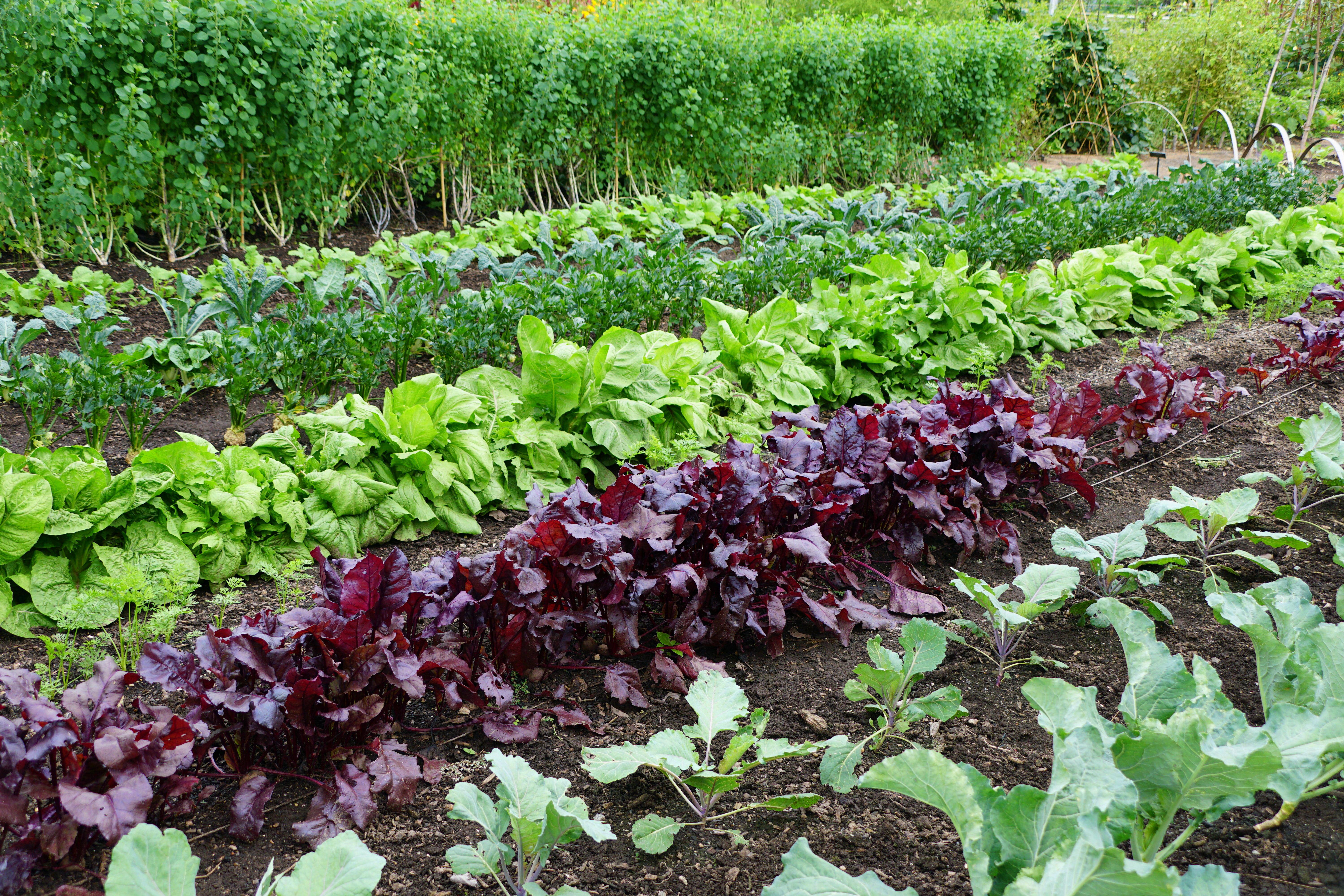
Growing a vegetable garden can be a rewarding and enjoyable experience, but it requires proper planning and maintenance to ensure success. Here are some tips for growing and maintaining a vegetable garden:
Choose the right location:
Ensure that your garden receives at least six hours of sunlight per day and has good drainage. Avoid planting in areas that are prone to flooding or have poor soil. Prepare the soil: Improve soil fertility by adding compost or aged manure. Test the soil pH to determine if any soil amendments are necessary.
Select appropriate plants:
Choose plants that are suited to your climate and soil conditions. Consider the space available and the needs of the plants in terms of water, nutrients, and sunlight. Water regularly: Most vegetable plants require consistent moisture to thrive. Water deeply once a week rather than lightly every day to encourage deep root growth.
Control pests and diseases: Monitor your garden regularly for signs of pests or diseases. Use organic pest control methods to avoid chemical contamination and support the natural ecosystem of your garden.
Harvest regularly:
Harvest vegetables as soon as they are mature to encourage continued production. Regular harvesting also prevents over-ripening and rotting of produce.
By following these tips, you can grow and maintain a healthy and productive vegetable garden. Remember that gardening is a continuous learning process, and experimenting with different techniques and plants can lead to even greater success.
Grown for its edible flower buds and stalk. Broccoli is a nutritious vegetable and can be eaten fresh or cooked. Broccoli bears dense green clusters of flower buds at the end of each branch.

If left unharvested, those buds bear yellow flowers. Harvest should occur before the flowers form, as the taste becomes bitter once the plant flowers.
Considered a “Superfood”, Broccoli is a great source of antioxidants and may enhance your health by reducing inflammation, improving blood sugar control, boosting immunity, and promoting heart health.
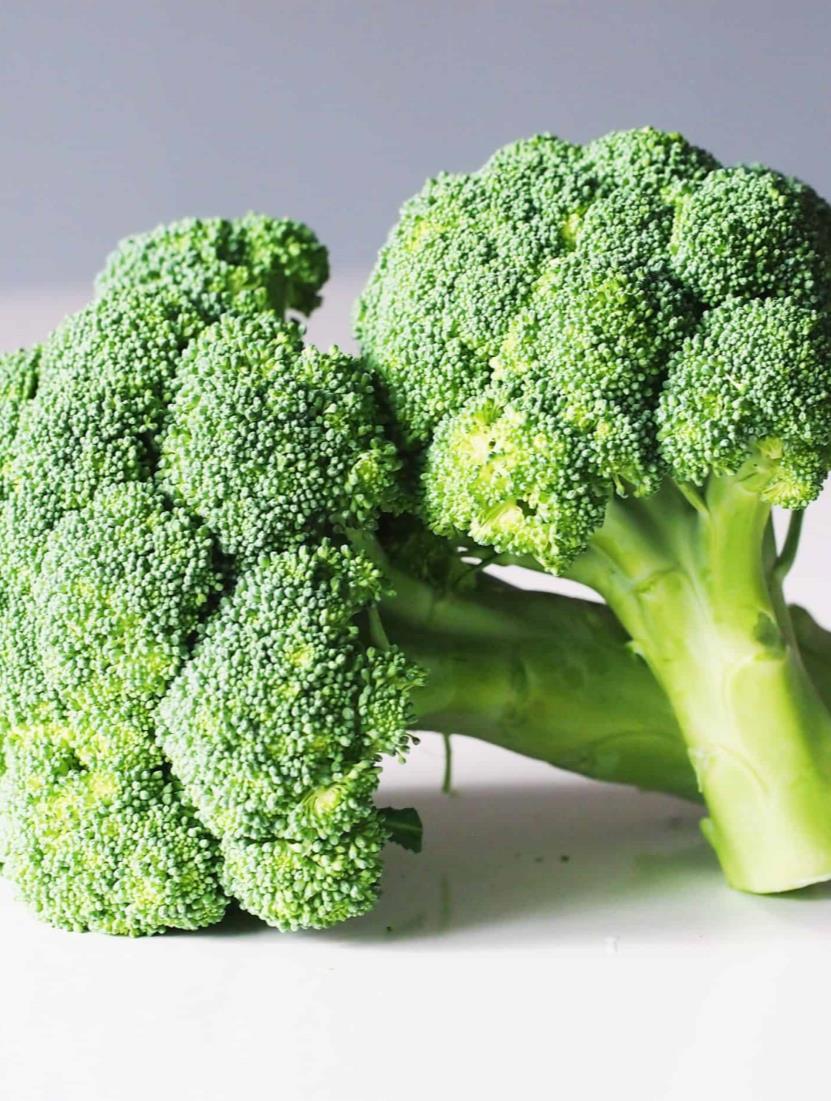 Brassica oleracea var. italica
Brassica oleracea var. italica
Known as Broccolini in the produce section of your grocery store and on restaurant menus, Aspabroc resembles a broccoli raab with an asparagus stem, and offers a mild, spicy taste. Harvest often to encourage better side shoot production, providing you plenty of Aspabroc for tasty recipes! Plant transplants when soil is cool. Plants require full sun and even moisture. Plant carefully to avoid damaging the stems.

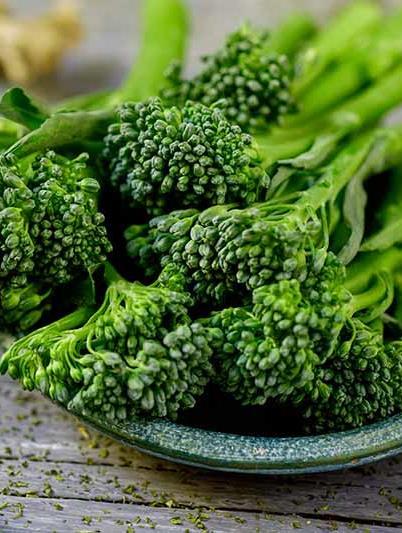 Brassica oleracea var. italica
Brassica oleracea var. italica
Sometimes called mini cabbages, they have appeared on “most hated vegetable” lists due to their potentially bitter flavors, often caused by overcooking, particularly by boiling. However, when properly cooked & seasoned, Brussel Sprouts offer a natural, nutty sweetness. Containing Vitamins C & K, Potassium, Calcium, Folate, Carotenoids, & Fiber, Brussel Sprouts have been researched for their anticancer effects. The sprouts grown on a stalk that reaches 2-3’ tall, with each stalk producing 15-20 sprouts. Sprouts should be harvested when they are bright green and before they turn yellow.

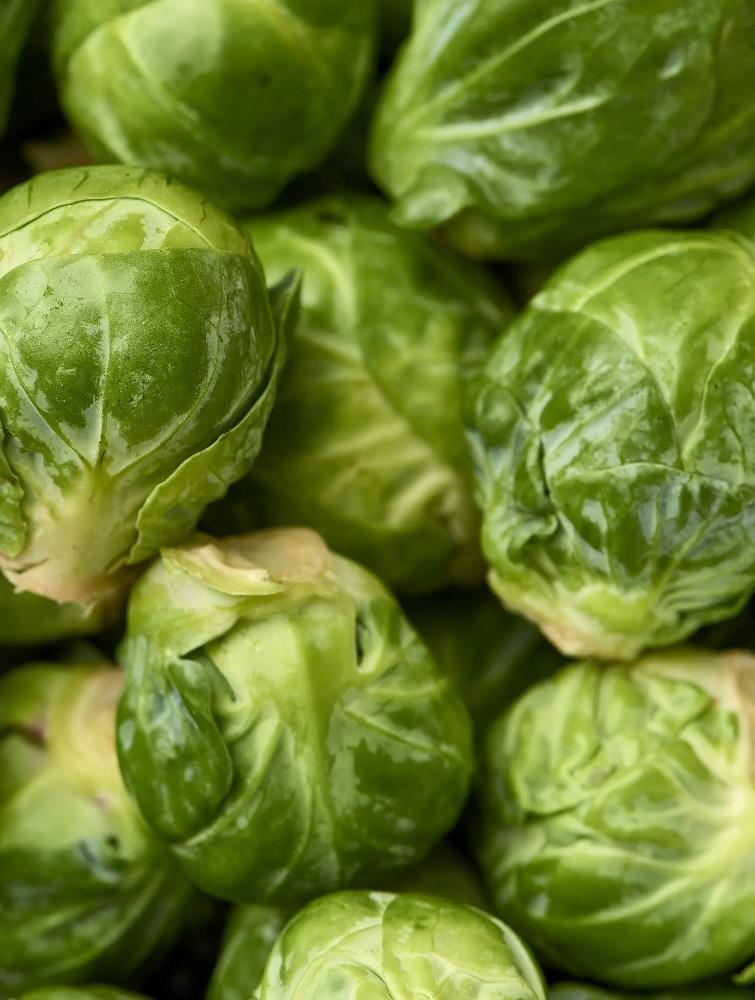 brassica oleracea var. gemmifera
brassica oleracea var. gemmifera
Near-perfect: easy to grow, widely adaptable, earlier than most, round, solid and short-cored. Weighs a heavy 4 to 6-lbs. for its 6-in. diameter. Firm, creamy white interior is crisp throughout. Holds well in the field and rarely splits, so no need to rush the harvest. Ideal in cool regions. Resists yellowing and tolerates black rot.

 brassica oleracea var. capitata
brassica oleracea var. capitata
Sometimes referred to as Purple Cabbage, it is slightly smaller & denser than green cabbage, with a more peppery taste. This variety of cabbage gets its purple-reddish color from the flavonoid anthocyanin, a powerful antioxidant that is commonly thought of as a protection against cancer. Red cabbage may also help with weight loss since it’s low in calories, has high water content, and is a good source of dietary fiber and other nutrients. Growing red cabbage is similar to green cabbage, requiring full sunlight and plant spacing of 12-24” .

 brassica oleracea var. capitata
brassica oleracea var. capitata
Personal-size and widely adapted. Sugar Cube lives up to its name with intensely sweet flavor. Very uniform, heavily netted 2–2.5 lb. fruits (just a bit bigger than a softball) with deep-orange, aromatic flesh perfect for single servings. A scoop of vanilla bean ice cream dropped in the seed cavity makes a sublime summer treat. Strong disease package and long harvest window. Harvest at full-slip (when a gentle tug removes the fruit from the vine).

 cucumis melo
cucumis melo
Extra early and adaptable. This hybrid shows unusual seedling vigor. Good quality, mediumsize heads whether harvested in summer or fall. Good tolerance to moderate fall frost (25–32°F). NOTE: When grown under fertility or moisture stress all cauliflower, but particularly Snow Crown, can show a purplish coloration on the undersides of the heads.

 brassica oleracea var. botrytis
brassica oleracea var. botrytis
Bright orange heads. This beautiful, early, orange cauliflower holds well in the field. It becomes an even brighter orange when lightly cooked. Market Cheddar alongside other specialty varieties for an irresistible combination. Brighter orange, but less heat tolerant than Flame Star. Best for fall harvest, but can also be spring sown for a summer harvest.

 brassica oleracea var. botrytis
brassica oleracea var. botrytis
Vigorous plants offer better flavor and outsize yields, with fresh, tender stalks that are super crunchy and sweet.


Trellised, this monoecious Japanese Slicing cucumber will grow straight and 12" long, but quality is best if picked at 8-10". The smooth, dark green fruit are thin-skinned and tasty with no bitterness, giving it far superior eating quality over common slicers.

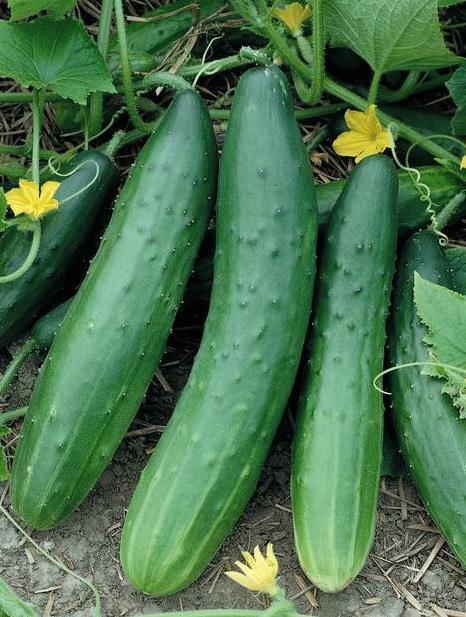 cucumis sativus
cucumis sativus
Uniform fruits great for fresh eating or pickling. Compact, multi-branching vines climb easily. Great for field, greenhouse, or containers. Plants produce fruit under stress and without pollinators, guaranteeing high yields.

 cucumis sativus
cucumis sativus
Long, slender, dark green cucumbers. The slender, refined "Marketmore look" has long been the standard for slicing cucumbers in the North. Fruits stay uniformly dark green even under weather stress. Begins bearing late, but picks for a relatively long time. High resistance to scab, and intermediate resistance to cucumber mosaic virus and powdery mildew.

 cucumis sativus
cucumis sativus
Traditional black Italian type. Uniform, 7-8" long by 3-4" diameter, dark purple fruits are glossy and blemish free. Fruit hang in clusters for easy picking. Fruit has mild flavor with no bitterness and a fine, creamy texture. Tall, sturdy plants can set fruit under cool conditions. Green calyx.

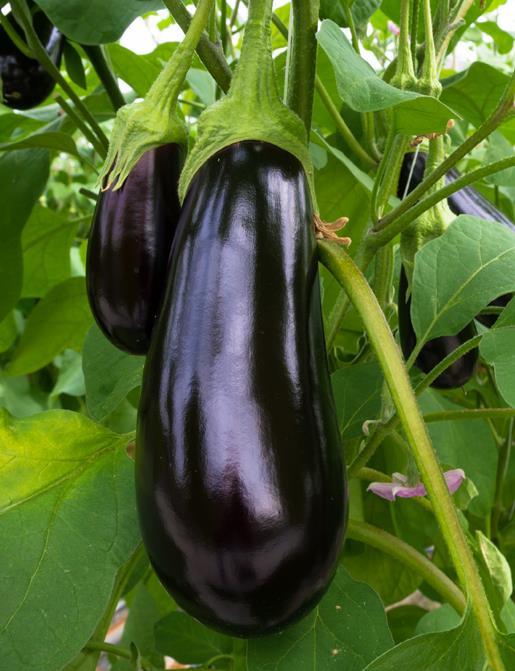 solanum melongena
solanum melongena
Earliest to market. Provider can be planted earlier than other beans because it germinates well in cool soils. Compact plants are easy to grow and adaptable to diverse soil and climate conditions. Produces 5 1/2" fleshy, round pod green beans. High resistance to bean mosaic virus and powdery mildew.


A standard green curly Kale. The plants are tall, growing up to 2-3', with excellent yield & good cold hardiness. The ruffled blue-green leaves have an attractive curl. Vigorous plants will continue growing to produce leaves for successive harvests as the lower leaves are harvested.

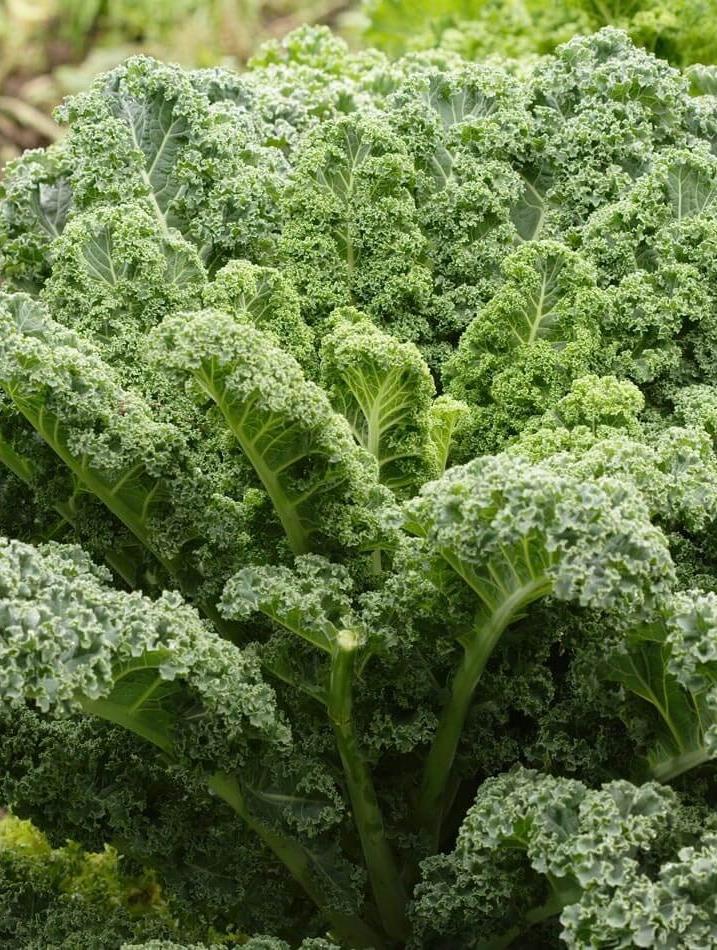
Large flavorful bell peppers. Widely adapted, has performed well in both the South as well as warmer regions in the North. Medium size plants with good leaf cover. High-yielding, uniform fruit with good flavor. High resistance to bacterial leaf spot races.

 capsicum annuum
capsicum annuum
A blockbuster variety for yield, quality and flavor. These sturdy plants bear big, plump, juicy-sweet peppers that ripen to a gorgeous glossy orange. Plants are both vigorous and high yielding with excellent disease resistance. These orange bell peppers are real beauties, heavy for their size, with thick walls, crunchy texture and fine sweet taste. Enjoy their delicious crispy flesh as a snack right out of the garden and use them for colorful, nutritious grilling, salads, stir-fries or sautés.

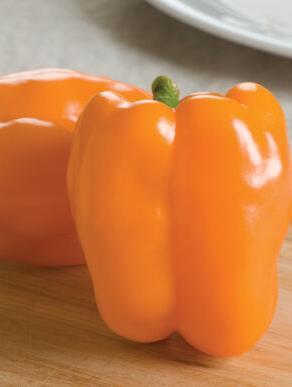 capsicum annuum
capsicum annuum
Get a jump on the season with a large, early, green-to-red pepper. Big, blocky, thick-walled bell pepper turns glossy red early. Fruity and sweet. Widely adapted. High resistance to bacterial leaf spot races and potato virus.

 capsicum annuum
capsicum annuum
Blocky, dark green bell ripens to yellow/orange. Medium-large 3and 4-lobed fruits are blocky to slightly elongated. The flavor is both fruity and sweet. A few days earlier than Flavorburst, Sweet Sunrise has a sturdier, mediumsize plant with better leaf cover. Yields well and fruits ripen early.

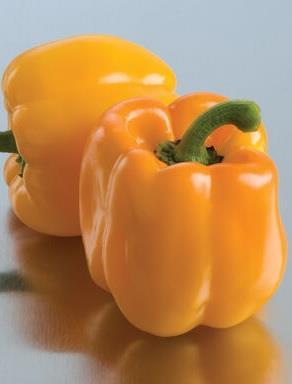 capsicum annuum
capsicum annuum
Early Thai-type pepper. The seeds for this variety were found in a market in Budapest in 2016. Since then, the variety has been improved by selecting for a more upright plant, earlier maturity, and more uniform fruit size. While from Hungary, it has the small fruit size and fiery heat of a Thai Chile. Fruits are borne upright on the plants, which are smaller and bear fruits much earlier than typical Thai pepper varieties, especially in regions with cool summers.

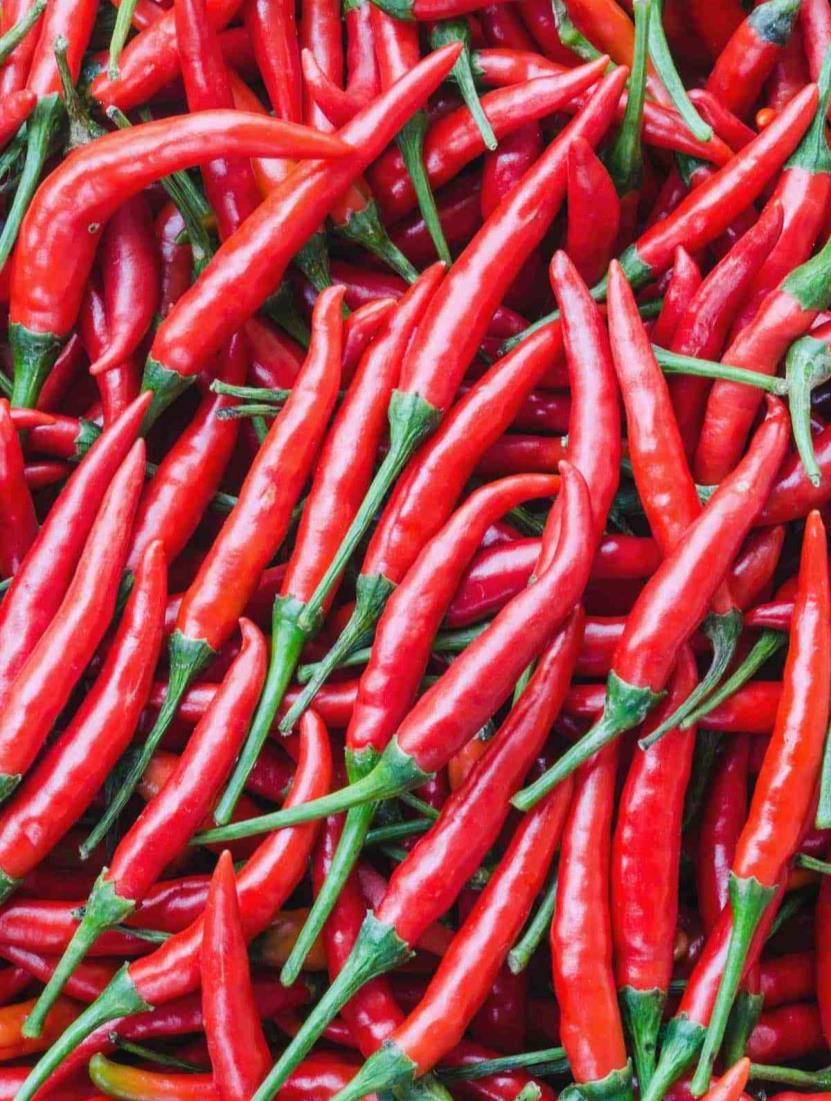 capsicum annuum
capsicum annuum
capsicum chinense
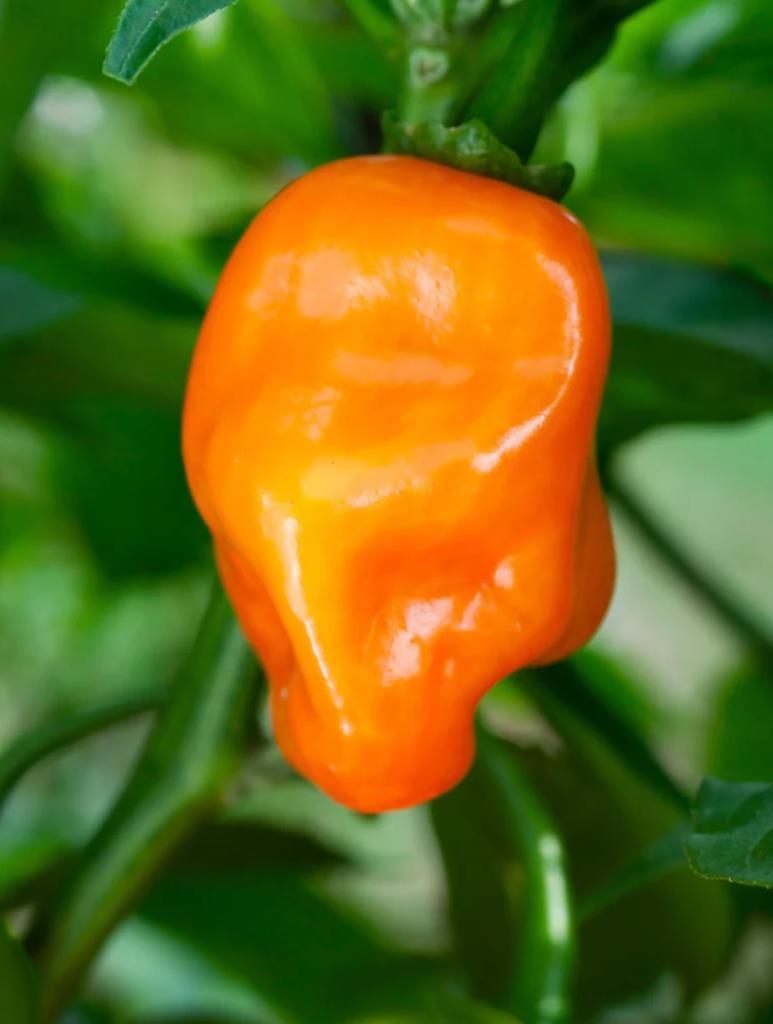
Traditional heat with fruity, citrus notes. The extremely pungent wrinkled fruits avg. 2" x 1 1/4" and ripen to salmon orange. A key ingredient in Jamaican "jerk" sauces.

Now the World’s Hottest Pepper! The Guinness Book of World Records recently proclaimed a South Carolinagrown cultivar named ‘Carolina Reaper’ as the world’s hottest pepper, registering 1,569,300 Scoville units of heat at a South Carolina university. Bright red, gnarled and lumpy with a scythe-like tail, ‘Carolina Reaper’ is a cross between Bhut Jolokia or ‘Ghost Pepper’ and a red habanero. The fruity flavor has a hint of citrus with sweet, chocolate-cherry undertones. Mature fruits are about the size of a ping pong ball.

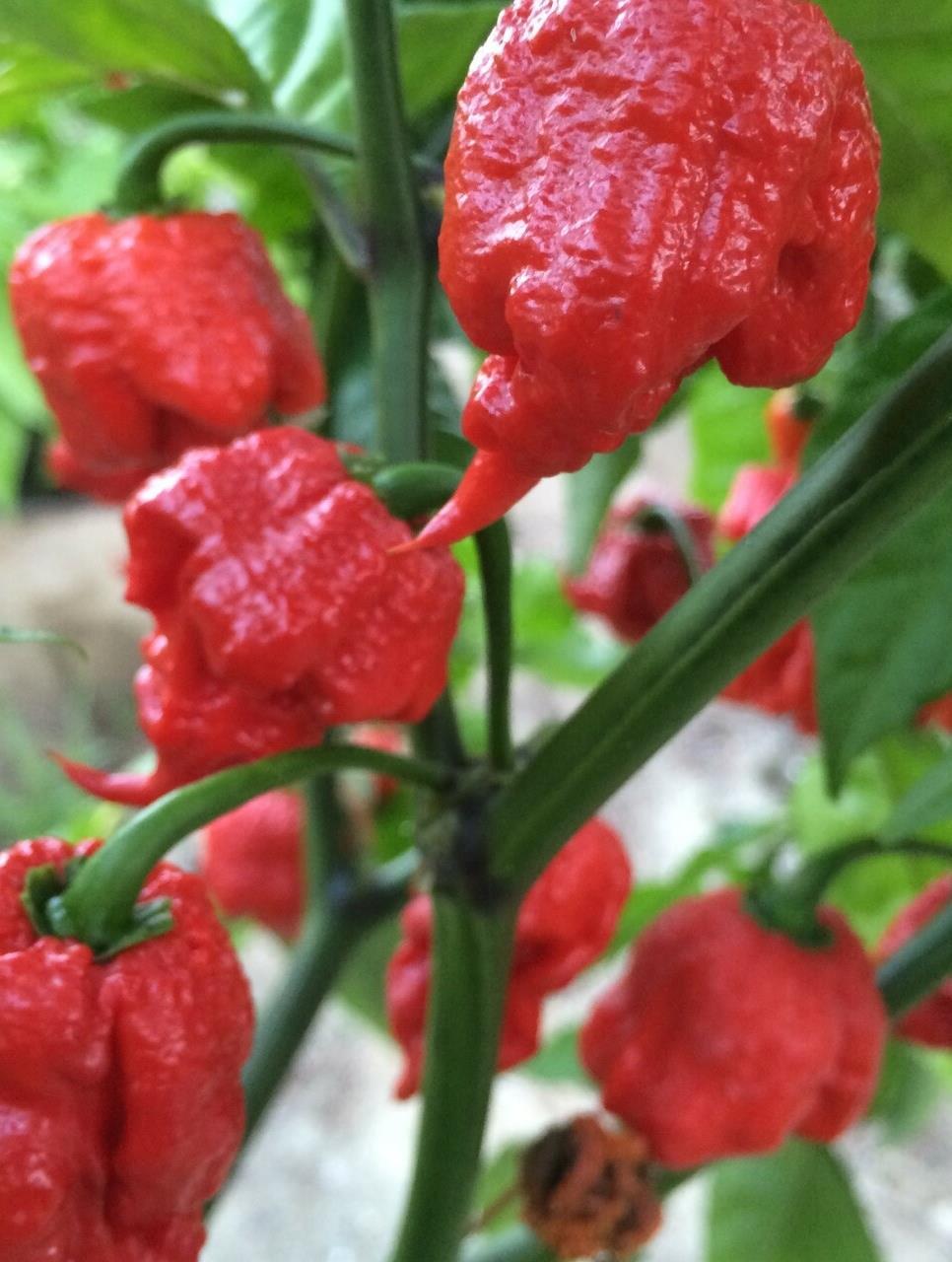
High-yielding, continuous set type. Our largest jalapeño offering, Jedi's fruits avg. 4-4.5" and are slow to check (show small cracks in skin). The large plant produces over a long harvest window, especially in regions with a long growing season. Very high yield potential. High resistance to bacterial leaf spot.

 capsicum annuum
capsicum annuum
Highly adaptable, large-fruited poblano pepper. Baron has proven to be widely adapted and has performed particularly well under challenging conditions. The fruits are very large, avg. 5" x 3", and are typically two-lobed which makes them easy to stuff and cook in their signature dish, chile rellenos. They also may be dried and ground into medium-hot powder or flakes. Intermediate resistance to bacterial leaf spot.

 capsicum annuum
capsicum annuum
This sweet wax pepper takes 60 days to grow. This classic, heirloom has been grown by generations of gardeners. It's a sleek, tapered fruit that reaches 6-7" long and 2" wide. When this pepper is immature, it has a translucent ivory color. The peppers ripen quickly to stunning red-orange. It's superb in salads, stuffed, pickled, and more. A true treasure!

 capsicum annuum
capsicum annuum
A tried-and-true Spinach variety for all seasons. Medium-green leaves are upright and smooth to slightly savoyed. Good disease and virus resistance.


Delicious small acorn. Just right for single servings when halved. Worthy of marketing by name. Semi-bush plant. Bred by Dr. Brent Loy at UNH to fulfill his career-long ambition to improve acorn squash flavor. Intermediate resistance to powdery mildew.

 cucurbita pepo
cucurbita pepo
Still the benchmark for large butternuts. Larger fruits with small seed cavities and thick, straight, cylindrical necks. Flesh has smooth texture and sweet flavor, particularly after 2 months of storage. This 1970 AAS winner from Massachusetts is still deservedly the most widely grown, full-size OP butternut. Fruits avg. 9" long.

 cucurbita moschata
cucurbita moschata
The classic pasta alternative. This excellent OP strain's flesh has the best noodle-like consistency in our trials. Slightly sweet, nutty flavor. Oblong in shape with ivory skin that changes to pale yellow at maturity. An excellent pasta alternative — bake or boil, fork out the flesh, and top the "spaghetti" with your favorite sauce. Short vines. Avg. weight: 3–5 lb.

 cucurbita pepo
cucurbita pepo
Garden favorite. This traditional variety is well known for its buttery flavor and firm texture.

Big plants are late to begin bearing, but then yield consistently over a long picking period. Best picked small, 4-5" long. Larger fruits will have a bumpy appearance.
 cucurbita pepo
cucurbita pepo
A yellow hybrid straightneck that is widely adaptable anywhere. Straight, slender, yellow fruits, 7½-in. by 2-in., with creamy mild flavor from prolific, diseaseresistant plants that yield loads and loads of high-quality fruits all summer long. Great holding ability.

 cucurbita pepo
cucurbita pepo
A versatile and flavorful heirloom variety with glossy, dark green skin that matures into a deep, lustrous black. With a firm texture and mild, nutty taste, this zucchini is perfect for grilling, sautéing, or baking into breads and cakes. Its compact and bushy plant produces abundant yields throughout the summer season, making it an ideal choice for both novice and experienced gardeners alike. Add some bold color and delicious flavor to your garden and dinner table with Black Beauty Zucchini!


A top variety for over 30 years. This early/midseason, Junebearing variety combines winter hardiness, high productivity, good appearance and color together with excellent, firm, large-sized berry. The large berries are easy to pick and the plants produce high yields over a long fruiting season, making it a very consistent berry producer. Home gardeners will also appreciate its excellent freezing quality.

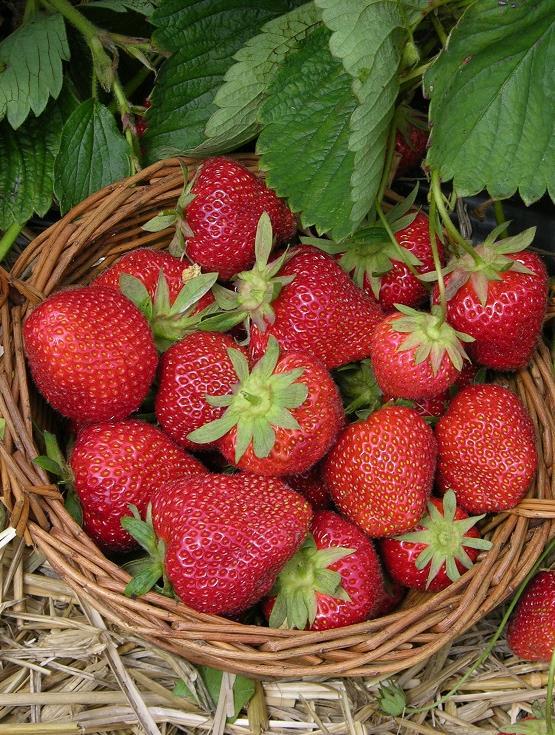 fragaria x ananassa
fragaria x ananassa
The gold standard for multicolored Swiss Chard. Nicely savoyed & glossy green or bronze leaves with stems of gold, pink, orange, purple, red, & white with bright, pastel, & multicolored variations. Consistent growth rate, leaf shape & texture, & strong bolt resistance across all colors makes this a superior mix. Suitable for production yearround, but somewhat less frosthardy than other chards.


Large beefsteak fruits with mauve-purple skin, green shoulders, and red flesh. The most popular of the "black" tomatoes for its outstanding flavor and texture. Widely grown by gardeners and market growers alike. A popular heirloom for the greenhouse. Believed to trace back over 100 years to the Cherokee tribe. Indeterminate.

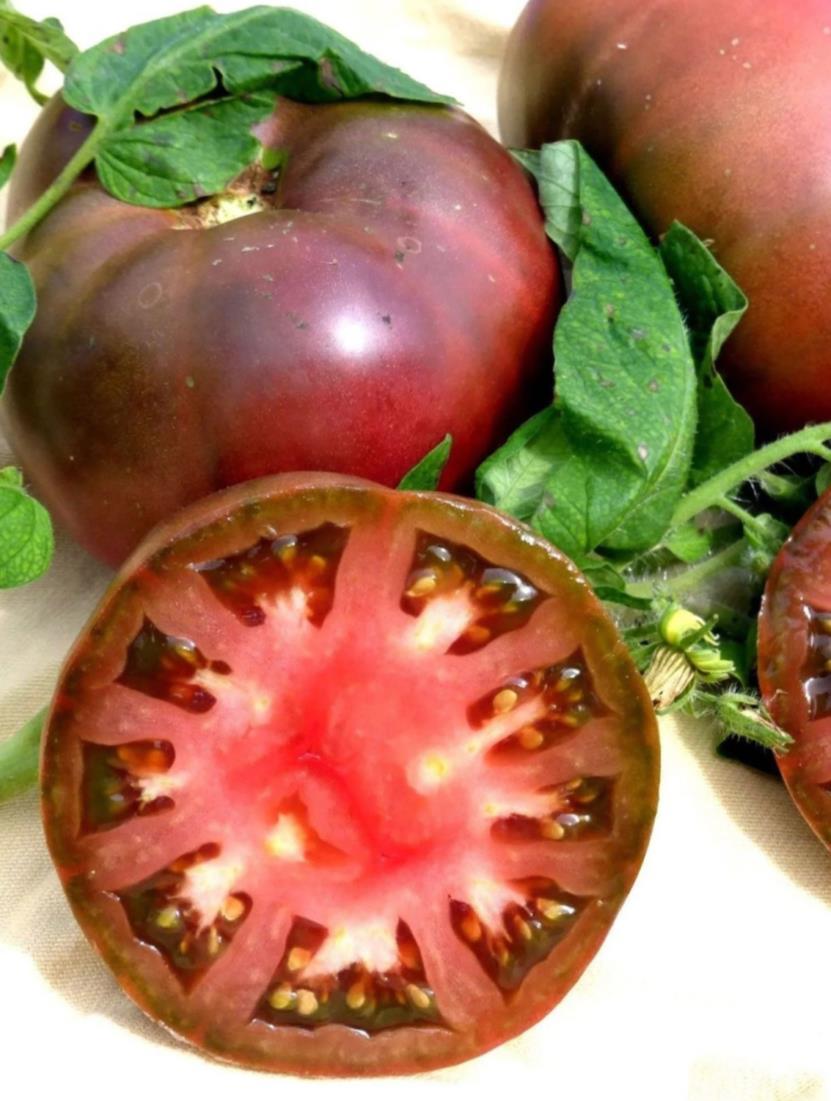
Green-striped salad specialty. A delicious, tangy salad tomato, ripe just as the green fruit develops a yellow blush, accentuating the darker green stripes. The fruits are the ideal size for slicing into wedges for salads. Productive over a long season. Indeterminate.


Our sweetest golden cherry. Bred by the same folks who beat Sun Gold’s standard for sweetness. Attractive, golden-yellow color and its extraordinary sugar-sweet flavor make this one perfect gourmet cherry tomato! Thinskinned, 1/2-ounce, crackresistant fruits. Indeterminate.


The classic, sweet, red cherry tomato. Not only is the flesh of these cherry tomatoes very sweet, but the plants can actually produce 100 tomatoes each. And that's just the start. Grown properly with ample support, they can yield upwards of 500 tomatoes per plant! Introduced in 1982, its fast growth, high yields, and sugary fruits quickly gained popularity. Supersweet 100 is also famed for its long growing season. An Indeterminate-type, it sets fruit over the course of the season, right up until first frost.


America’s most popular hybrid tomato for generations won a Guinness Award for producing 342 lbs. of fruit from only one plant! Boasts a distinct, always pleasing taste and bountiful, midseason-until-frost production of sandwich-sized slices. Fruits weigh about a pound and are juicy but firm. Good protection against the scalding sun. Excellent disease resistance and high adaptability. Indeterminate.

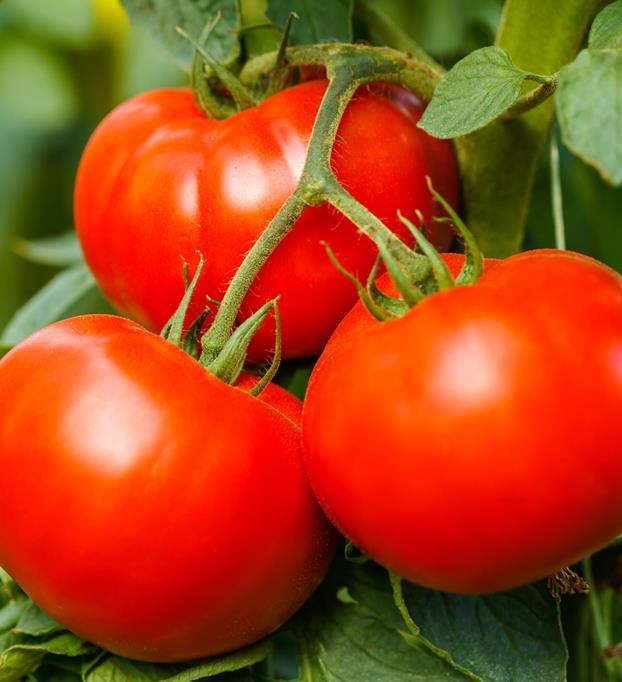
With earlier maturity and superior disease tolerance, Big Beef bears at least DOUBLE the number of extra large, extra meaty, extra tasty fruits of other varieties in its class. The fruits have better shape, color, and old-time tomato flavor, too. These well-adapted, indeterminate plants are tolerant of, or resistant to, verticillium wilt, Fusarium wilt races 1 and 2, tobacco mosaic virus, root-knot nematodes, and gray leaf spot.

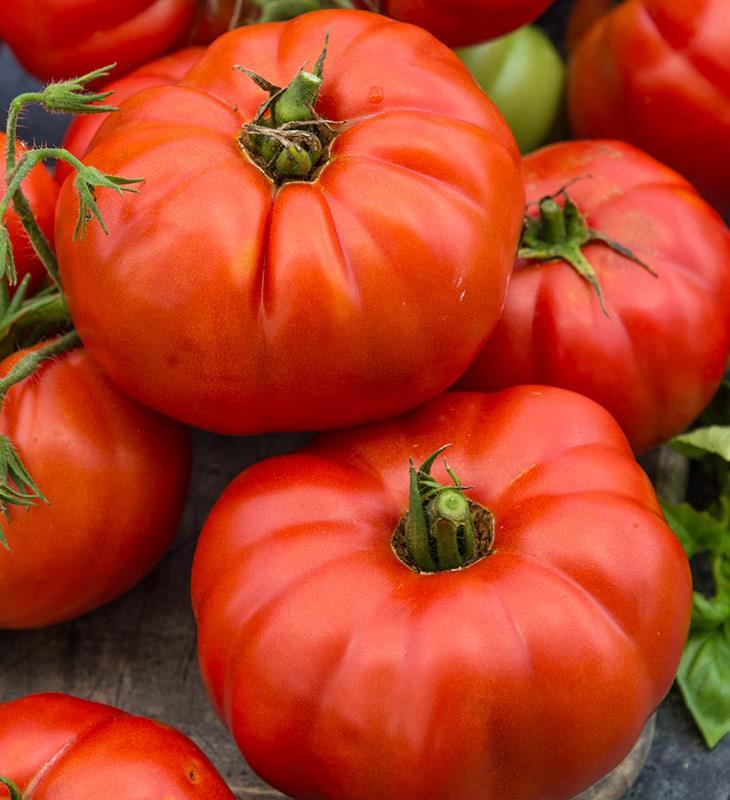
The most popular heirloom vegetable! A great potato-leafed variety from 1885 and one of the best tasting tomatoes. We describe Brandywine's luscious, heirloom flavor as "very rich, loud, and distinctively spicy." The large fruits, often over 1 lb., have a deep-pink skin and smooth, red flesh. The medium-tall, indeterminate plant is best staked or caged.

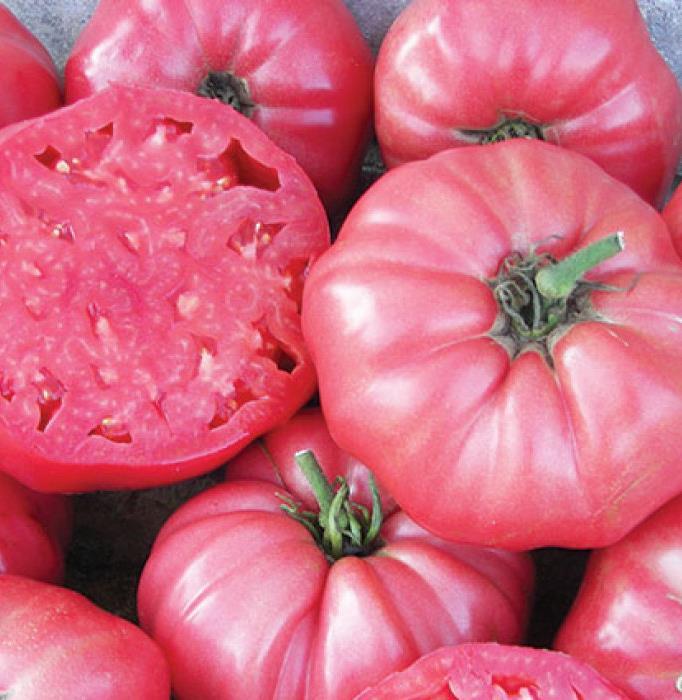
The most disease-resistant tomato of all enjoys great versatility in all types of growing conditions. This highly publicized AAS Winner captured the home garden and commercial market spotlight long ago and remains the benchmark of success. Deeply oblate 8-oz. fruits ripen to bright red on medium sized plants. Best grown staked or caged. Determinate.


Classic extra-early slicer that works great for dry farming. A longtime early favorite, Early Girl produces heavy yields of fullflavored, 4–6 oz. tomatoes. One of the first varieties to ripen each year. Also prized for its performance as a "dry-farmed" tomato, owing to its extreme tolerance to drought and blossom end-rot. High resistance to Fusarium wilt and Verticillium wilt. Indeterminate.


More vigorous, higher yielding Brandywine type. Recommended for higher productivity in a pink heirloom. Earlier, more uniform, and slightly smaller than Brandywine at 8-16 oz. Fruits have lots of deep, acidic tomato flavor and a rich, creamy texture. This is the regular-leaf strain, which is earlier and more productive than the potato-leaf strain. Indeterminate.

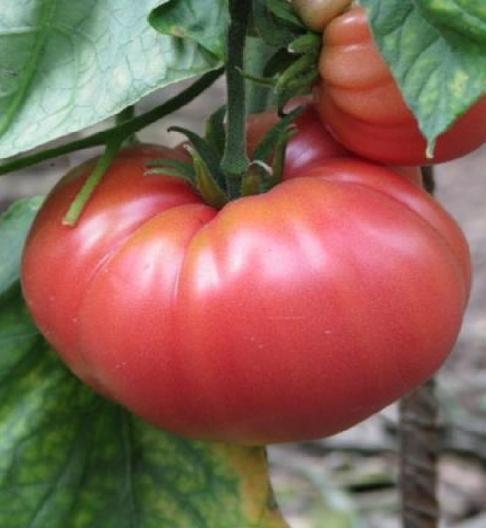
Large, smooth, pink fruit has a delicious, rich, sweet taste. This variety has become very popular in recent years and was developed by M.C. Byles of Logan, West Virginia. After crossing varieties for 6 years and selecting the best, he introduced this beauty that he named Mortgage Lifter in the 1940's after he sold plants for $1 each and paid off the $6,000 mortgage on his house. Indeterminate.

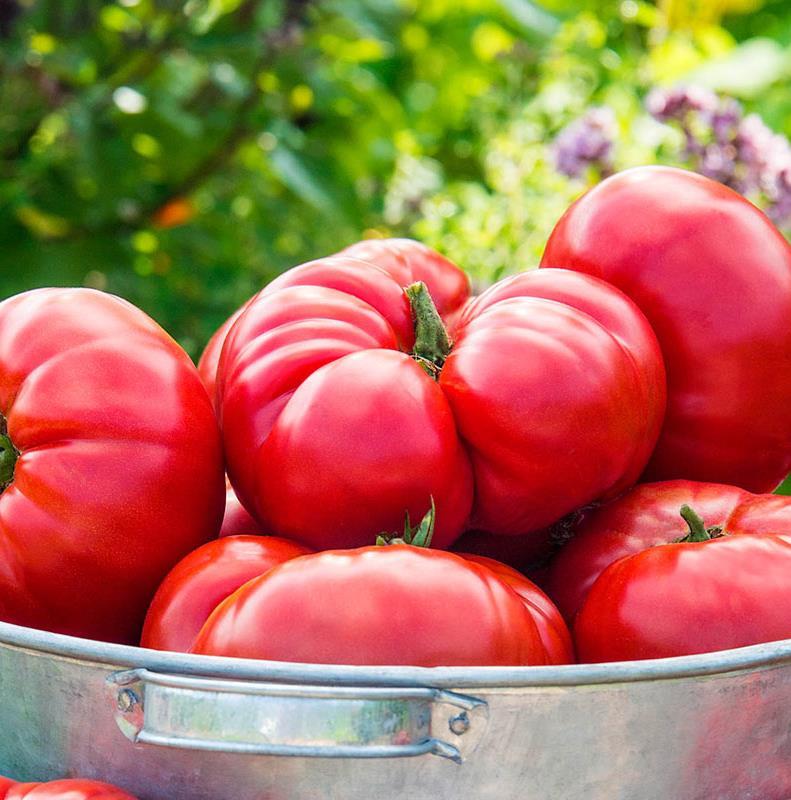
The most widely-grown market tomato in the East and Midwest. Uniform ripening, good color, crack resistance, improved flavor and huge fruit size. Sweet yet tangy flavor. Able to tolerate cool and wet conditions, this big red tomato produces attractive, 8-16 oz. slicers with good flavor. Determinate.



A favorite bi-colored heirloom. These huge, beefsteak-type red-and yellow fruits with a high sugar content are delicious and pretty to slice because of the bi-coloring. Although the variety is called Mr. Stripey, don't expect perfect stripes. This is an heirloom and no two tomatoes are ever the same. The background color of the tomato is yellow to light orange, and the red often appears in little spots that align themselves in stripes radiating from the stem end of the fruit. Indeterminate vines produce through the season; they are vigorous, so use tall cages.

Mid to late season tomatoes that are similar to beefsteak varieties and just as versatile. Their characteristic large size and pointed bottom resembles that of a beef heart, hence the name. The shape is due to a mutation that occurred in 1925 that causes the blossom end (bottom) to elongate. Because of their unusual shape and large size, they’ve started becoming more popular among home gardeners looking for alternatives to regular beefsteak tomatoes. Indeterminate.

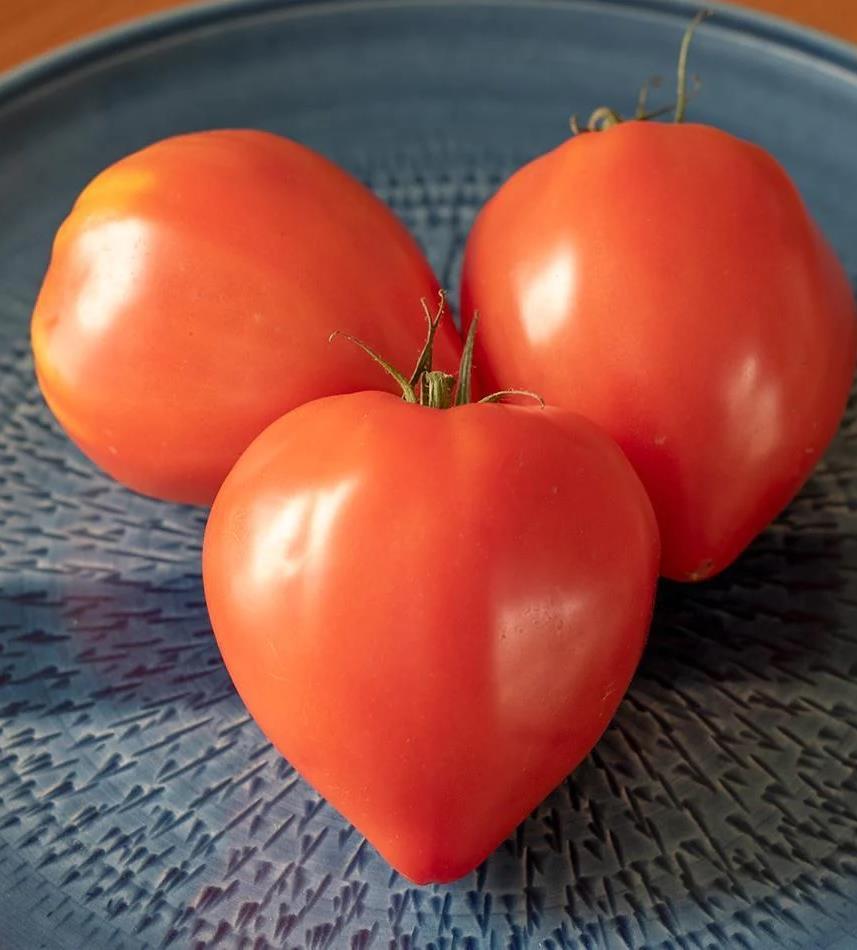
Developed at Rutgers in the 1920s and still famous for its remarkable flavor and large yields of 6 to 8-oz., solid, meaty, deep-red fruits, perfect for canning. This latest strain adds better disease resistance for even better yields, but keeps the old-fashioned flavor and quality. Indeterminate.

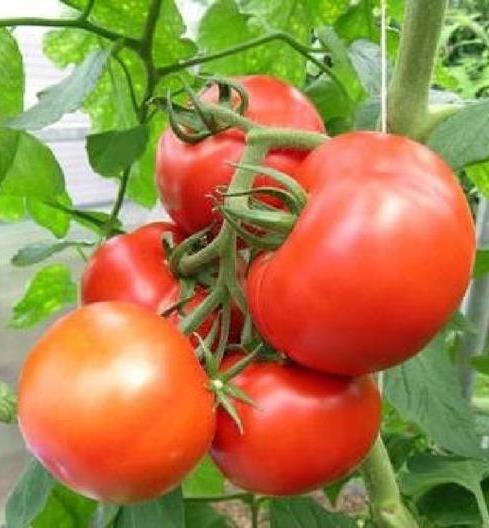
Many seed savers believe this is the ultimate paste tomato - flavorful and juicy enough for slicing, with great meatiness for cooking down. Giant, blocky, Romatype tomatoes have delicious red flesh that is perfect for paste and canning. It has world-class flavor and comes from an Amish community in Wisconsin. Very few seeds, which can make sauces and pastes bitter. Sweeter flavor than other paste tomatoes.


Heirloom Brandywine tomatoes are among the oldest and most popular tomato varieties grown in America, and the Yellow Brandywine tomato is no exception. This large gold-yellow beefsteak type tomato can weigh up to a whopping 2 pounds! These tomatoes have a robust flavor that is sweet and deliciously acidic. Also, the appearance can change from year to year, which keeps things interesting. Some years they may be smooth and other years there will be so many ridges or scallops that they resemble a pumpkin! Indeterminate.

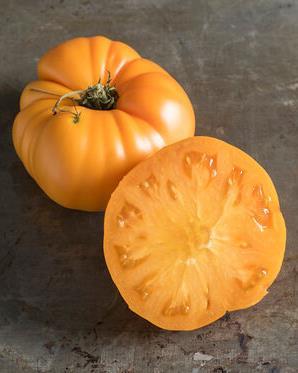

Generations of gardeners love Crimson Sweet Watermelon—and with good reason. Its deep crimson, fine-grained flesh is bursting with juicy sweetness and flavor. The oval-to-round melons average 20-25 lbs., so they're the perfect size for slicing up for picnics or cutting into fruit salads. The ovalto-round, light green fruits are striped with dark green—and have small seeds. The vigorous vines are resistant to fusarium wilt and anthracnose. Crimson Sweet is such a flavor favorite that it's often the standard by which other watermelons are judged.
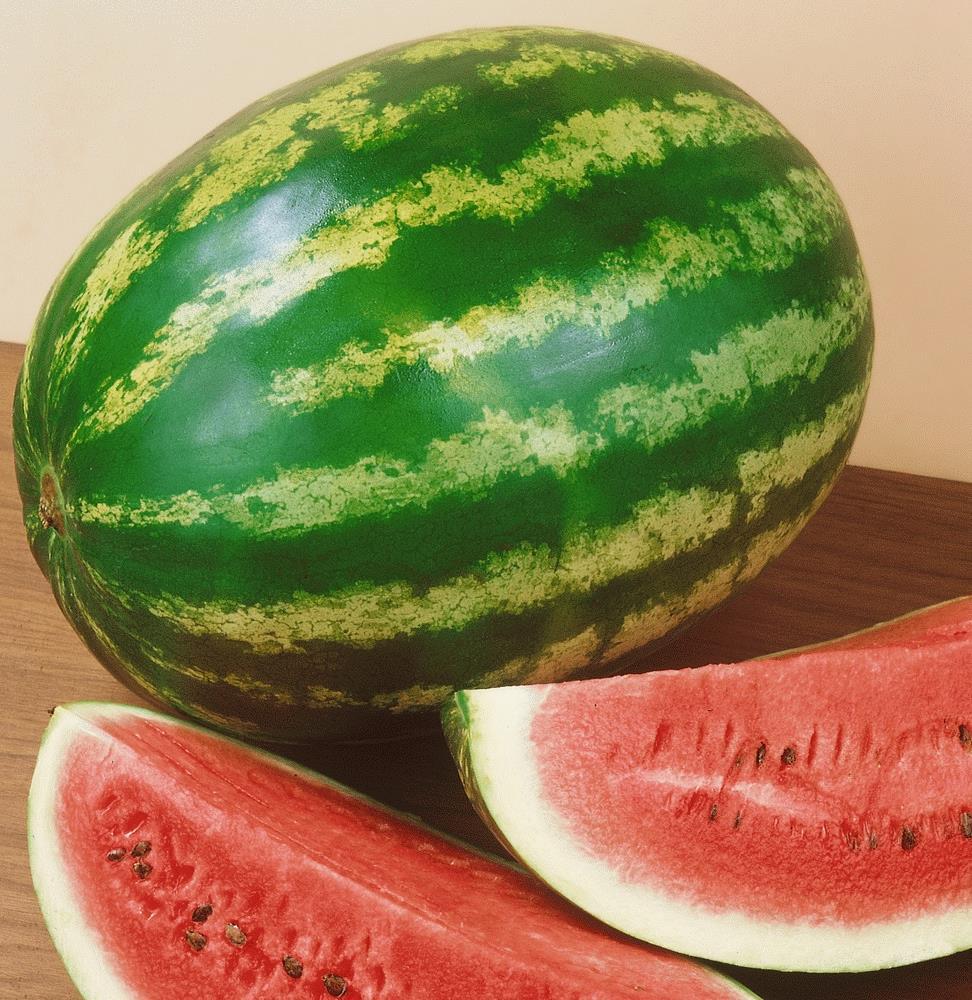
Love homegrown watermelon, but don't have lots of space? Sugar Baby

Watermelon saves space in the garden and in the refrigerator. The only thing oversized about Sugar Baby is its flavor—incredibly rich and sweet. Its compact vines produce plenty of 6-10 lb. fruits packed with sweet red-orange flesh. The melons are a perfect size for smaller families—and easy to fit into the refrigerator. The fruits have thin, tough rinds that become almost black when ripe. This heirloom variety was introduced in the 1950's and is widely adapted throughout many parts of the United States.
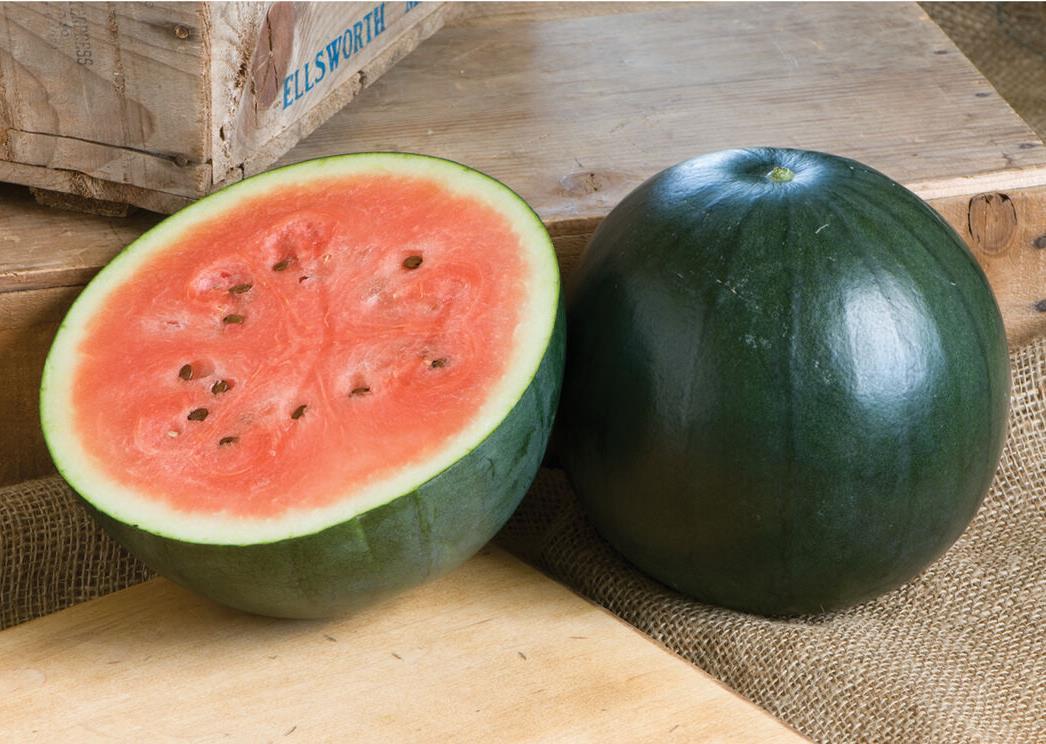
Love homegrown watermelon, but don't have lots of space? Sugar Baby

Watermelon saves space in the garden and in the refrigerator. The only thing oversized about Sugar Baby is its flavor—incredibly rich and sweet. Its compact vines produce plenty of 6-10 lb. fruits packed with sweet red-orange flesh. The melons are a perfect size for smaller families—and easy to fit into the refrigerator. The fruits have thin, tough rinds that become almost black when ripe. This heirloom variety was introduced in the 1950's and is widely adapted throughout many parts of the United States.

The best of both worlds: fastgrowing and very fusarium resistant, with the traditional, classic Genovese flavor, but without the strong licorice aftertaste that many gardeners could do without. Leaves are large, bright green and crinkled, making them ideal for vegetable wraps, soups or fresh chopped. Reaches 12-20” tall with a spread of 10-16” . Annual.

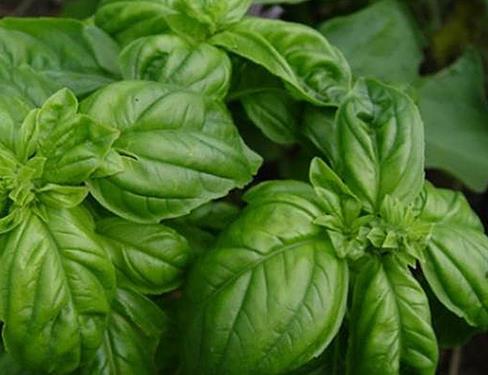 ocimum basilicum
ocimum basilicum
Unique, spicy aroma with hints of coffee and chocolate. Fragrance reminiscent of fruit & cloves. Compact but very full, attractive plants. Faster growing than green holy basil, and its purple flowers also make it a nice beneficial and/or ornamental. For teas, culinary, and medicinal use. Very good resistance to downy mildew. Also known as "Spice Basil" and often referred to as ocimum sanctum, although sanctum is not botanically correct. Ht. 12-18".

 ocimum tenuiflorum
ocimum tenuiflorum
Zesty citrus aroma. Adds a unique flair to cocktails, fish, and salads. Compact plant has 2" long brightgreen leaves. Ht. 16-20". Edible Flowers: Use the flowers in any recipe that calls for basil, or to garnish drinks, salads, soups, pasta, and desserts. Flavor is of intense basil and citrus. Leaves can be used with fish and chicken and in herb butters. It can also make a refreshing drink. Thrives in a hot, sunny location.

 ocimum x africanum
ocimum x africanum
Known for its refreshing and subtly sweet citrus fragrance bursting with lemon scent, even when barely touched. Sweet, tangy and intensely flavorful, use for flavoring soups, appetizers, and main dishes. Can be used in both raw and cooked applications. Attractive long leaves with white blooms. 20-24" tall. Annual.

 ocimum x citriodorum
ocimum x citriodorum
An improved Thai-type prized for its sweet, spicy, licorice flavor with anise overtones. Purple stems make it ideal for either ornamental or culinary use. Try it as a flavorful garnish for sweet dishes. Large, tender, 4" tropical leaves on 20-24" plants that are perfect in containers.

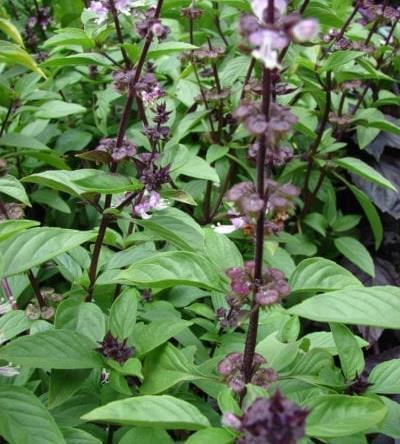 ocimum basilicum
ocimum basilicum
Vigorous, high-yielding plants. Cat-attracting perennial with gray-green leaves and white flowers. Not only attracting cats, but also very attractive to bees. Fill tiny pillows with fresh or dried leaves for cat playthings. Also makes a great tea. 18-24" tall. Perennial.

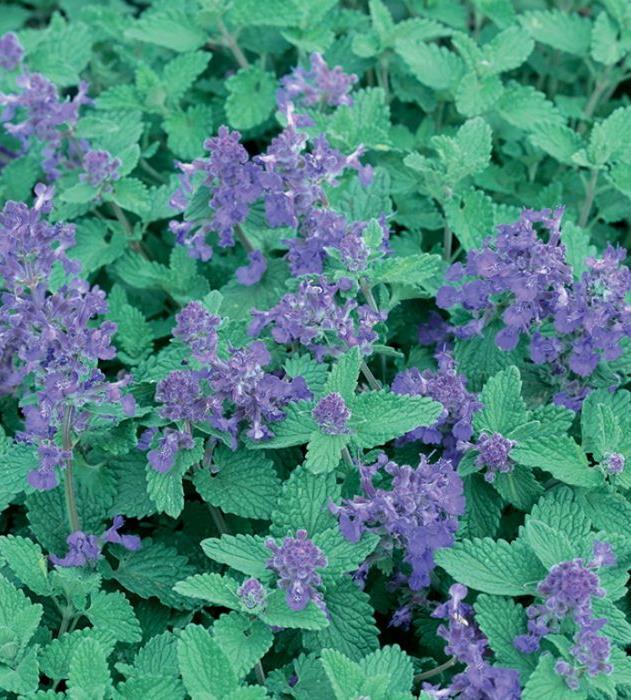 nepeta cataria
nepeta cataria
Pull the florets apart and sprinkle on salads, dips, sauces, soups, stir-fries, and pizza. Great as an addition to potato salad. Flavor is of mild, sweet onion. Grasslike plant grows easily indoors or outdoors. Beautiful, globeshaped, lavender-pink blooms. 12" tall. Perennial.

 allium schoenoprasum
allium schoenoprasum
Best variety for leaf production. Cut and come again. And again. And again. Fragrant, citrusy herb sparks up salsa, guacamole, sauces, and seafood. Perfect for your herb garden or mixed container. Combines very slow bolting with upright habit for easy harvest. 20” tall.

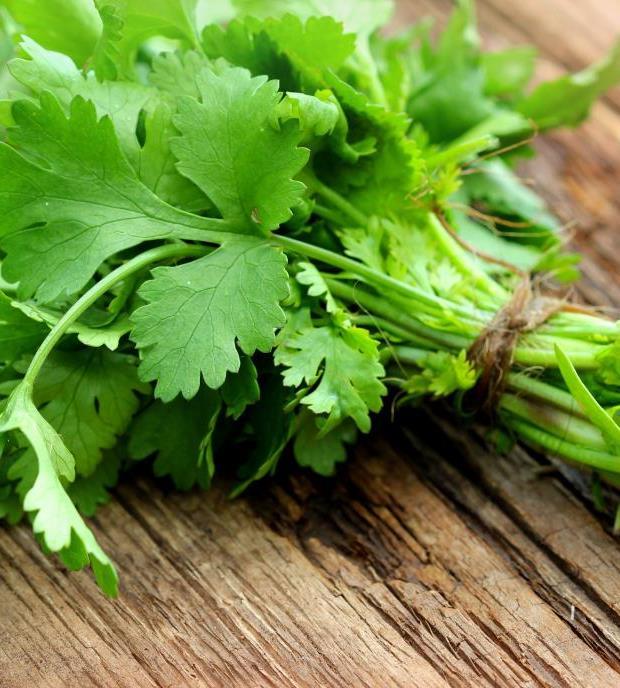 coriandrum sativum
coriandrum sativum
Dukat is an especially sweet & mellow dill. The fine cut, blue green leaves hold longer than other varieties. Use Dukat's aromatic fresh leaf fronds lavishly. Sprinkle on steamed summer veggies, sliced tomatoes and cucumbers, in mixed green salads and dressings, in sauces, and most deliciously, over grilled or poached salmon and other fish. Let some plants bloom to give nectar to butterflies and then harvest the pungent seed heads to season pickles. Foliage known as dill weed.


Grown for its seeds and foliage, dill has a strong flavor used often with fish, lamb, potatoes, & peas. Great variety for use in pickling, too! One of the slowest-bolting dwarf dill. Abundant, dark bluegreen foliage. Great in containers or in small spaces. Late flowering allows for a long harvest season and extended ornamental period. AAS winner. Reaches 6-8” tall.

 anethum graveolens
anethum graveolens
Heavy bulbs are uniform, high-yielding, and offer the traditional anise flavor. Suitable for late summer and early fall harvest in most areas. Prized by the ancient Greeks & Romans, who used it as medicine, food, and insect repellent.
Fennel tea was believed to give courage to the warriors before battle. According to Greek mythology, Prometheus used a giant stalk of fennel to carry fire from Mount Olympus to Earth.

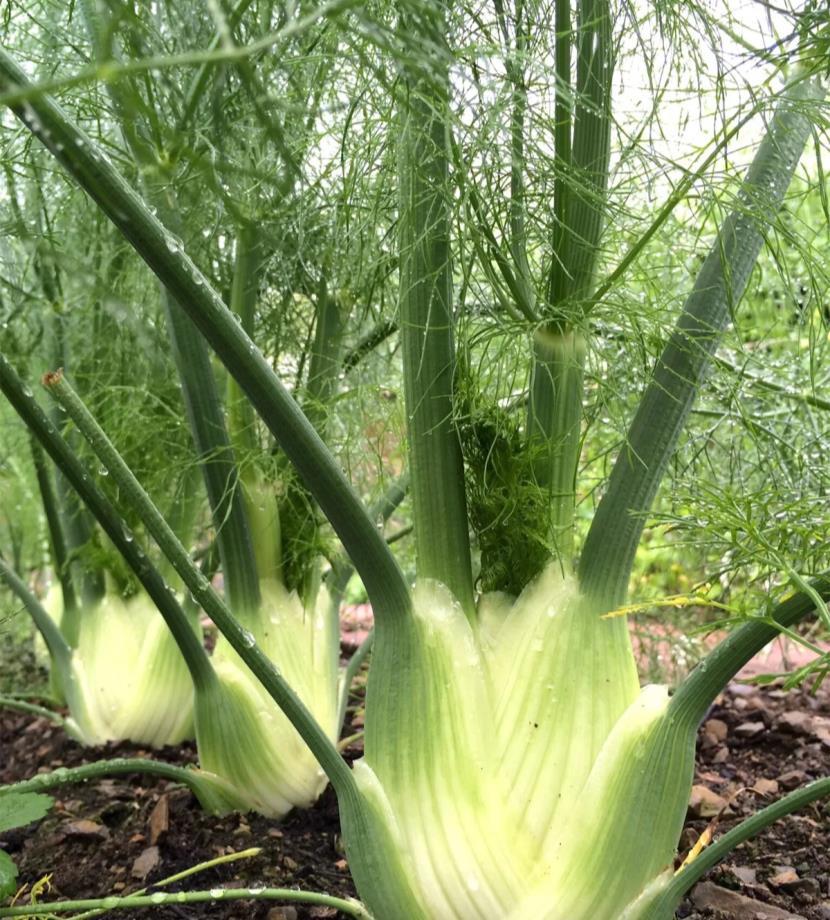 foeniculum vulgare
foeniculum vulgare
Essential to Thai, Indian and Vietnamese cuisine, this beautiful grass adds beauty to the garden, forming a clump of graceful, arching leaves within one season. Foliage emits a lemony fragrance. The bulbous portion of the stem is used in cooking. Well-known as an insect repellent. Popular in perfumes. Annual.

 cymbopogon citratus
cymbopogon citratus
Compared to Italian Oregano, Greek Oregano are larger, both in height and spread. Greek Oregano also has a stronger, more pungent aroma. Expect a deeper flavor with heavy notes of camphor. It stands out strongly, even in dishes with other strong flavors. The majority of recipes that call for 'Oregano' mean Greek Oregano. Even classic Italian dishes generally rely on the bold flavor of Greek Oregano. 1218" tall. Perennial.

 origanum vulgare
origanum vulgare
Savor classic Italian cuisine with the mildly spicy, peppermint-like cool leaves of this Oregano. Perfect for Mediterranean dishes, soups, sauces and roasted vegetables. Compact, trailing plant grows to 12- in., with lovely, silver-gray foliage to give it both a culinary and ornamental dimension. Ideal as a container plant, a ground cover or in the border. Dried leaves make a wonderful dried spice. Perennial.

 origanum x majoricum
origanum x majoricum
The preferred culinary variety. Huge, dark green leaves with great flavor. Use leaves for garnishes, salads, and cooking. Strong, upright stems make Giant of Italy one of the best parsley varieties for fresh market sales. Very high yielding. Reaches 1820" tall.

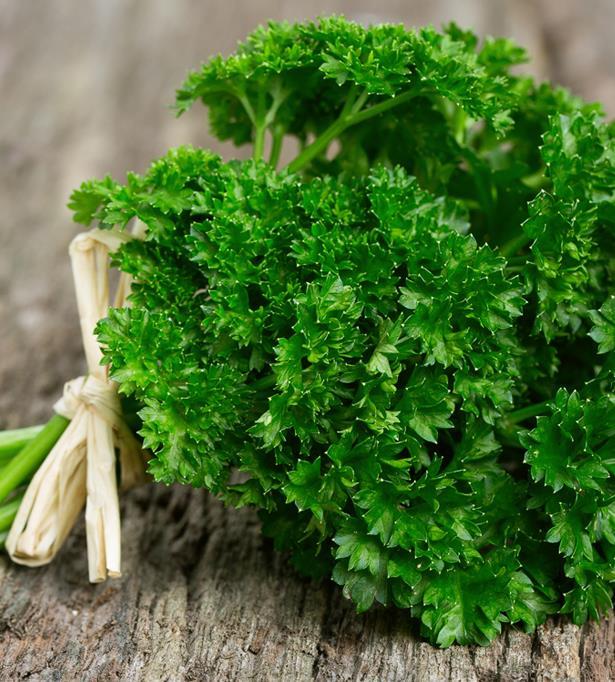 petroselinum crispum
petroselinum crispum
A very dark green selection of the moss curled type. Use it for garnishes, salads, casseroles, & omelets. Bonus: Parsley sweetens your breath after eating garlic or onion! It performs well in containers and allows for multiple cuttings per season from one planting. The parsley flavor improves with each successive cutting. Reaches 12-16" tall. Annual.

 petroselinum crispum
petroselinum crispum
Native to the Mediterranean, Rosemary has silvery, needle-like foliage and delicate flowers. The leaves are widely used for flavoring meat and tomato dishes, and the stems can also be used as skewers for kabobs. Dried Rosemary retains much of the flavor and makes an excellent substitute for fresh. Annual.


A staple of the herb garden. Wide variety of culinary uses. Dusty, green leaves are used in dressing, sauces, salted herbs, sausage, and tea. Make a good base for dried floral wreaths.

Medicinal: Leaves are used as digestive and nerve tonics. Also known as garden sage. Edible Flowers: Lovely, small lavender flowers appear in early summer with a mild and sage-like flavor. Flower spikes can be battered and fried, cooked in rice, egg, or cheese dishes, or used to garnish salads and pizza. Perennial.
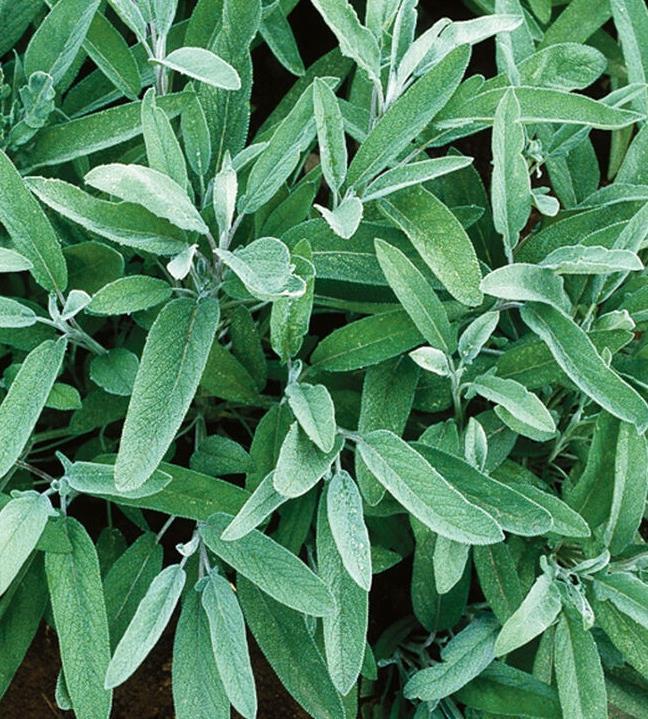 salvia officinalis
salvia officinalis
A hardy perennial mint with bright green serrated leaves, Spearmint has served as an important medicinal heb for millennia. The herb grows easily in fertile, moist, and loose soil conditions. It spreads through a wide network of underground runners. The distilled oil of this herb is used to flavor toothpaste and chewing gum. The leaves are commonly used for teas, mojitos, and culinary creations. As a general rule, the mentha family is best grown in containers as it's known to root vigorously when allowed to grow freely. Perennial.

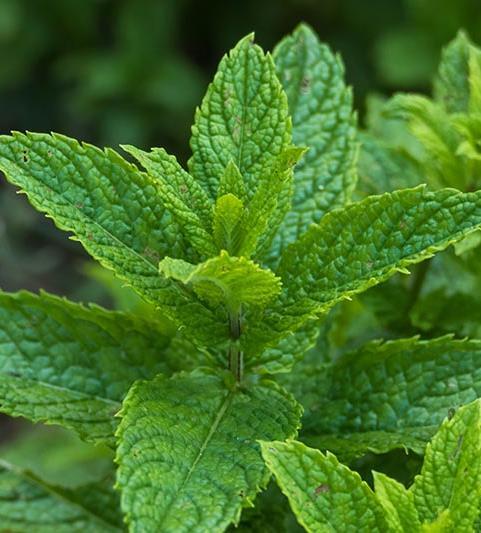 mentha spicata
mentha spicata
A hard-to-find herb that is grown for the famous Stevia leaves which, when dried, are used as an herbal alternative to sugar to sweeten drinks and deserts. Much sweeter than sugar, Stevia powder is reported to be 300x sweeter! Bushy, high-yielding plants. Annual.

 rebaudiana
rebaudiana
A leafy green herb that is highly aromatic. Tarragon is one of those herbs people tend to either love or hate, depending on whether they prefer the taste of licorice. But this herb has a complex flavor that brings more than just anise to the palate. It is a combo of bitter & sweet, with touches of vanilla, mint, pepper, & eucalyptus, distinguishing it from other licorice-tasting foods like Fennel. It adds a fresh, spring taste and a bit of elegance to a variety of recipes, including salad dressings, sauces, and fish and chicken dishes. 30-40" tall. Perennial.

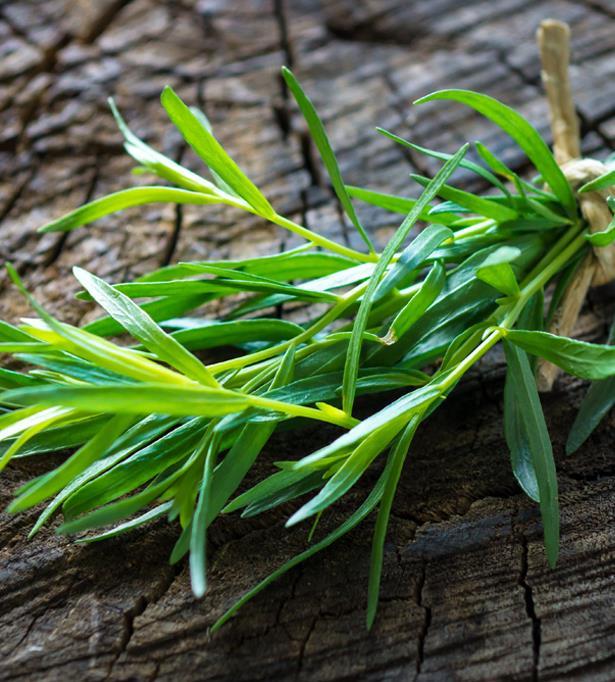 artemisia dracunculus
artemisia dracunculus
English Thyme is a low-growing plant with fragrant leaves. This herb goes well with just about everything. Add it (fresh or dried) to blended herb mixtures, or use in soups, sauces, beans, meat dishes, and more. It's also a great addition to potpourri or homemade soap. But Thyme isn't just useful inside the house, as it also makes a wonderfully aromatic ground cover or border. Perennial.

 thymus vulgaris
thymus vulgaris

